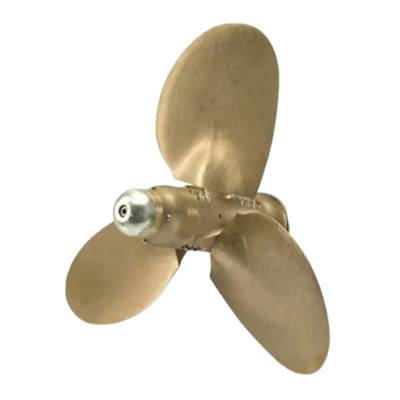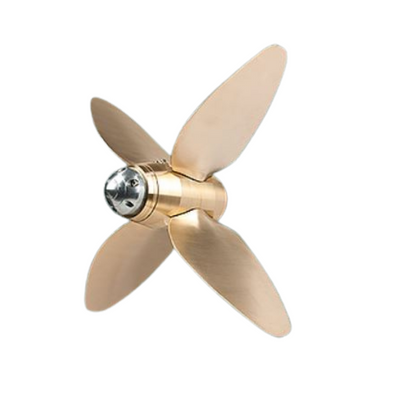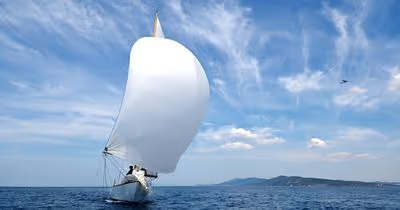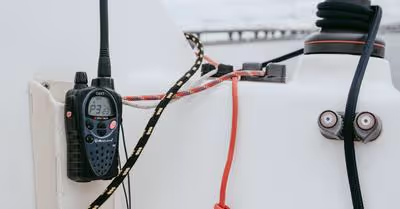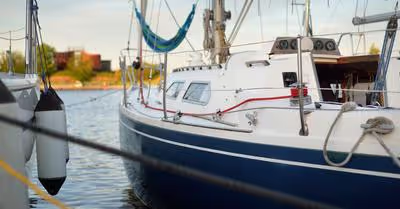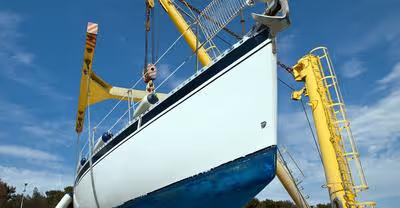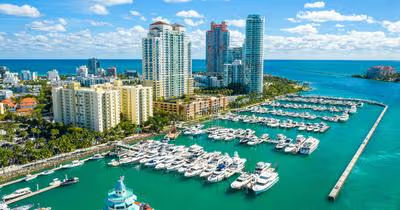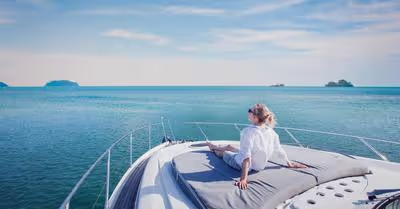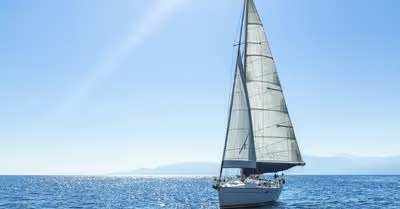Table of Contents
Eight of the Best Sailboat Propellers
If you already know what sailboat propeller you are looking for, then jump right into the search for the best ones on the market. Depending on specific needs such as racing, cruising, or bluewater navigation, each propeller will have their own special characteristics.
J-Prop by Betamarine
J-Prop by Betamarine
The J-Prop is one of the best all-around propellers on the market. This ideal feathering boat propeller is great for cruisers and racers, but can also be used comfortably in deep bluewater territory.
Being that it is the best of both worlds, sailors can effectively use this propeller for any purpose. Keep in mind that since it is of high standards that high price tags come with it.
With precision machinery, this prop is built to last and is constructed with high quality materials such as aluminum-bronze alloy and stainless steel. It also has enhanced corrosion protection and is built tough against prop strikes.
Pros
- Increased speed
- Low maintenance
- Greater maneuverability
- Quality materials
- Three or four blade options
Cons
- High price tag ($2,000 and up)
- Might not fit in smaller boats, especially with keels
Max-Prop by PYI
Max-Prop by PYI
The Max-Prop is one of the most appealing propeller brands in today’s market. PYI has been around since 1972 and offers reliability that sailors can trust.
Through rigorous testing and development with a fail-safe design, this is arguably one of the best props you can buy. Over the years they have added newer versions to fully meet customer expectations.
They recently introduced the Whisper and Boomerang models, which are both five blade props that offer heavy displacement and are designed for larger vessels.
Pros
- Two to five blade options
- Increase sail speed
- Virtually no drag
- Highest efficiency in market
- Easy maintenance
Cons
- High price tag, around $2,000
- Might not fit with keel boats or other smaller sailboats
Kiwiprops
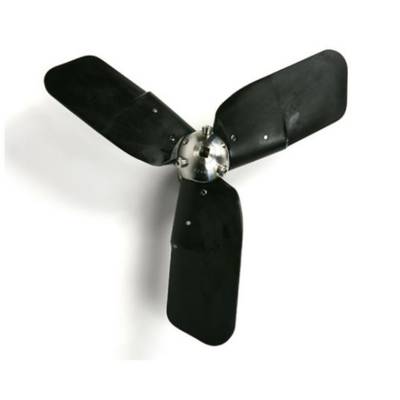
Kiwiprops
The composite Kiwiprop is one of the more affordable, yet long term props built to last. For a composite propeller, this one ranks near the top with quality.
It comes with an instruction manual to double check the quality of the work so you know that they did their job. Once you install the already put together prop, you can rely on the craftsmanship to get you out on the water safely.
The lightweight propeller offers smoother operation and is much quieter than other props. For lighter cruising or a peaceful evening at a slower pace, this might be the one for you.
Pros
- Easy maintenance
- Simple parts to put together
- Can be used for smaller or larger boats
Cons
- Typically around $1,300 for just a composite
- Might not be right for larger boats
- If you want to adjust pitch, you have to use allen key in difficult spot
Flexfold
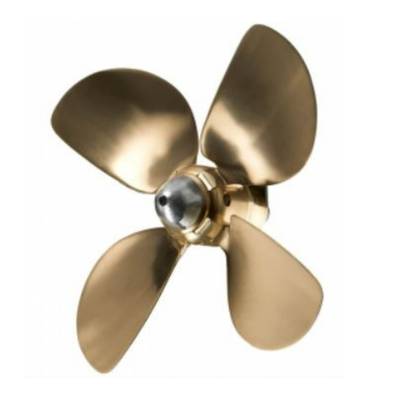
Flexfold
Flexfold propellers offer great options for sailors that want to keep a little more money in their pocket without compromising on quality. These particular propeller blades do not stick out while sailing, so you will not snag any lines or debris.
If you are not sure which propeller you need, the service team can help guide you through the process. They can help you locate the exact measurements to help identify which model to choose.
They also boast that their propellers fit on all common saildrives and shafts, meaning they practically fit on any boat. Depending on your specific needs, it would not hurt to check them out.
Pros
- Easy maintenance
- Worldwide delivery
- Very low drag and great speed
- Quiet
- Comfortable ride
Cons
- Just under $1,000 depending on model
- Larger boats and racers might want more power
Michigan Wheel
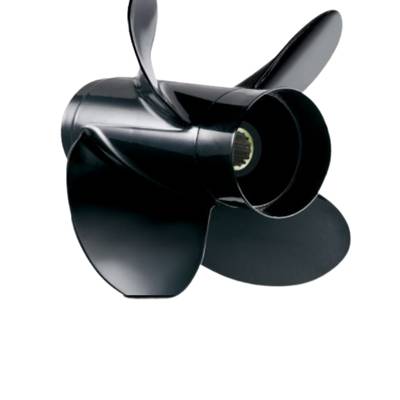
Michigan Wheel
The Michigan Wheel propellers are of great quality that you can trust. These conventional propellers have stood the test of time and are hard to pass up for the value.
The brand has outstanding customer experience and support. Over the last 100 years, they have been providing customers with reliable propellers.
They custom build propeller models for government and commercial purposes, in addition to recreational, so contacting them would be your best bet to find the propeller that works for you. With the high quality materials they use to build these propellers, you can rest assured that you will have this one for a long time.
Pros
- Blades from two to eight
- Multiple series of models to choose from
- Vast blade lengths
- Use only certified virgin ingot metals
- Prices range from $500 and up
Cons
- Models could be overwhelming to look through
- Not as many options for sailboat propellers as compared to their section for larger tow boats or government use
Variprop
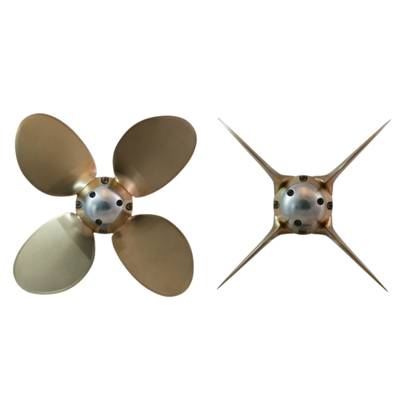
Variprop
The Variprop propeller is a unique feathering model that can adjust in the water. Through engineering over the years, these blades move seamlessly in the water.
The blades automatically balance themselves out to offer the least amount of drag possible. In return, you get a quality product at a great price.
It is hard to beat quality props from Variprop, especially since they have been in the business for over 30 years. If you have a smaller boat or want something to give you a boost, it might not hurt to compare their products.
Pros
- Continuous improvements to design for over 30 years
- Perfect for most boats, depending on size
- Low maintenance
Cons
- Price is above $1,000
- Limited to specific uses and not larger boats
Quicksilver Aluminum
Quicksilver Aluminum
When it comes to aluminum propellers, it is hard to pass up the quality of Quicksilver. They also offer stainless steel in case you want to go that route.
If you know your exact measurements, then you are in luck. Their aluminum options are appealing, especially with the lower entry prices.
They provide one of the better industry leading propellers without having to sacrifice quality or performance. Improving top speed and performance is the main goal here, which is why they have been successful.
Pros
- Low maintenance
- Very low price compared to most
- Great for smaller boats
Cons
- Limited to specific uses
- Only moderate performance increase on cruisers
- Difficulty providing power to larger boats
Mercury Max Propellers
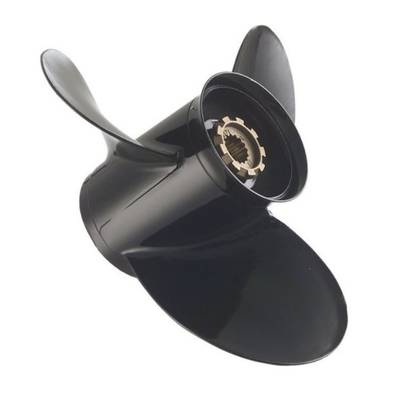
Mercury Max Propellers
The Mercury Max propellers are a great addition to any boat under 250 horsepower. The sport series, Black Max, is available in a variety of pitches and boat types.
Primarily, these are just three or four blades to help power a boat to safety or for fun. Other Mercury propellers are designed for heavier use, but the Black Max is a leading brand for the market of smaller boats.
Pros
- Low maintenance
- Very low price and good value
- Excellent for smaller boats like a dinghy
- Good quality aluminum
- Help reach top speed of 50 mph
Cons
- Very limited to specific uses
- Somewhat slower to other similar propellers in market
- Might not survive heavy strikes to blades
Mechanics of Sailboat Propellers
When choosing what makes a sailboat propeller one of the best, it is important to know what parts make the propeller and even brushing up on propeller safety. Regardless if you are new to boating or a seasoned professional, knowing how to take care of your propeller can add years to its life.
When you see the mechanics of the propeller, it will help in identifying a good one and a bad one. Likewise, it will help in the hunt for the best one to add to your sailboat.
Blade Tip
This is the maximum reach from the blade, furthest away from the propeller hub. The blade tip separates the leading edge from the trailing edge.
Leading Edge
This part of the blade, which is closest to the boat, makes first contact with the water. Coming from the hub, it extends to the tip.
Trailing Edge
The furthest part of the blade from the boat, in which water leaves the blade. This part extends from tip to hub, which is close to the diffuser ring on through-hub exhaust propellers.
Cup
This is the lip or a curve feature on the trailing edge of the blade. This allows the propeller to hold water smoothly and add somewhere between a half inch to an inch of pitch.
Face of Blade
For the blade face, this is simply the side that is facing away from the boat. This is also referred to as the positive pressure side of the blade.
Back Blade
This is the side of the blade that faces the boat. Whether you call it negative pressure or back blade, this is important for determining suction.
Root of Blade
The location at which the blade attaches to the hub. You never want any damage here, as it will be difficult to add or remove.
Inner and Outer Hubs
The inner hub is the forward interior of the where the metal surface typically transmits the propeller to thrust forward. Through the hub, it eventually makes its way to the boat.
For a through-hub exhaust propeller, the exterior surface is in contact with the water at all times. The blades are also attached to the exterior surface. The interior surface is in contact with exhaust passage and ribs, which connect the outer hub to the inner.
Ribs
With through-hub exhaust propellers, these connect between the inner and outer hub. There are typically three ribs, but sometimes between two and five. The ribs can be parallel to the propeller shaft or parallel to the blades depending on the type of model.
Rubber Hub
A rubber molding that is used for the inner splined hub that protects the propeller drive system from any impact damage and flex when shifting gears. This relieves the normal shift shock when used in low horsepower functions.
Diffuser Ring
This helps in the reduction of exhaust back pressure and prevents exhaust gas from building up back into the blades.
Exhaust Passages
With through-hub exhaust propellers, this is the hollow area located between the inner hub and outer hub. Exhaust gasses are discharged into the water, but some stern driven installations with the use of through-transom exhaust systems carry air.
There are three types of hubs that have different features and exhaust passages. These are known as rubber, a hub system, and a solid hub (typically used for racing sailboat engines).
If exhaust gasses are discharged in the water, then you have a through-hub exhaust propeller. If they are not discharged through the water, but over the hub, then these are known as an over-the-hub exhaust propeller.
Knowing the differences between these features can greatly affect the outcome performance of your boat. For example, the over-the-hub exhaust propeller has fast wind up times and allows for top speed improvements due to less drag. However, the time it takes to accelerate will be slightly less.
Number of Blades
Depending on your goals for sailing, the number of blades can make a huge difference in the overall performance of your boat. Having a single blade propeller has been, in the past, one of the more efficient propellers if you could withstand the vibration.
So with an acceptable level of vibration and efficiency, a two-bladed propeller is a step up in compromising a balance between efficiency and vibration. However, the most common forms of propellers use three blades as a way to combat the problems of vibration, costs, and efficiency.
In today’s sail boats, you will likely see three or four blades on a propeller. Especially for racing boats, these use three or four blades.
For sailboats that want to run at increased surface heights, the use of four and five-blades propellers have become more common. With little to no vibration, it also improves acceleration by allowing more of the blades into the water and lifting the bow higher out of the water for more speed.
Blade Thickness
Depending on the type of performance you are expecting from your boat, the thickness of the propeller blades will have an effect. Blades should be as thin as possible to move through the water efficiently, depending on the material that is used for the blade. It takes more power to push a thicker blade through the water than a thin one.
Trailing edges of thickness will vary on some blades, with it typically being between .06 and .08 inches thick for aluminum propellers. As for stainless steel, these will be slightly thicker.
Blades with a thick trailing edge need to be run surfaced. If you try to run the blades deep, they are less efficient at performance because surface air cannot ventilate any of the low-pressure cavitation pockets that are being formed behind the thick trailing edge.
Material of Blades
Propellers are generally classified by the material that is used to make them. The three most common are steel, composite, and aluminum.
Most of these are going to be a combination of steel and aluminum, with a handful of other elements involved. If a company that makes a propeller does not specifically state the materials they use, you are somewhat in the dark. It is best to check with a brand to make sure you are getting what you paid for.
Propellers that have steel are going to be the most durable in terms of strength and performance. Aluminum is the next best option for boats that still need performance with a lighter design and cheaper cost.
As for composite propellers, this could be one of the best bang for buck options if you have issues with tearing up your prop in shallow areas. They are the cheapest option, but you can easily replace them without having to worry about spending too much.
You would need to make sure that it would be a good addition to your sailboat. Some composite propellers are only meant for stern drives up to 200 horsepower.
Propeller Blade Types
The blade type is going to make a big difference to your sailboat performance. The types of blades available are meant for specific uses.
Typically, sailboat propellers are broken down into six types. These include:
- aluminium
- stainless steel
- Reverse thrust
- cleaver
- chopper
- stainless steel (higher performance)
Since there are so many designs and material combinations being used to make propellers, they are all going to vary in size and shape. In addition, their purpose will all be slightly different, but there are three blade types that are the most common out there.
Conventional Blades
A conventional blade, often referred to as round-eared, is one of the most common propeller types you will see. Due to its rounded contour, it allows for a slight amount of sweep back for just about all performance situations.
The design is meant to be fully submerged to offer the best performance. However, some may be used to run slightly surfaced, but typically with a light load.
Weedless Blades
If you have ventured to areas with a lot of debris in the water and have issues with things tangling on the prop, a weedless blade is your ideal one to have. These are a classification of blades that are rounded with a high degree of skew, which means the leading edge sweeps back in a high degree without exposing edges to snag onto anything.
Depending on the brand, you still cannot fully escape the propeller being tangled in a mess. These particular blades have the best opportunity to free you from a mess.
Typically, these blades will help shed any mess that has been caused by any tangling of debris with reversing the propeller rotation or a short burst of operation. While the design is not bulletproof, it still provides a great opportunity to avoid tangled messes.
Cleaver Blades
The cleaver is a nickname for this particular prop blade dubbed years ago. The blades have a trailing edge on a straight line versus other prop types.
Often you will see the blade’s shape being accompanied by a blade cross section that resembles a wedge. The leading edge is quite thin, but very sharp and the trailing edge is the thickest point on the pitch line.
Having this type of propeller is best for sailboats that have elevated engine installations. These propellers are meant to break the waters’ surface, which are for boosts that are meant to go surfacing.
Other Aspects That Influence Propeller Options
Depending on where you are spending the most time in your sailboat, the type of propeller being used will matter in those situations. Once you have narrowed down the type of blade or material you want, you need to also consider how you will use the propeller.
Finding a propeller on sale that fits the specs for your boat might be a great find. However, you want to make sure it stands up to the amount of load you are going to put on it.
How Heavy is it?
The weight of the propeller could make a huge impact on your sailboat’s performance. The heavier the propeller is, the less pitch it will be able to have and require more work on the engine.
Determining how heavy of a load you are going to put on your boat could help you choose the propeller that is right for you. This allows you to narrow down a propeller that is either geared for a heavier load or something that is used for lighter ones.
In some cases, you might consider buying two different props that you could change out easily. If you have a high-performance boat that can handle slight changes without compromising performance, this could be a great way to test out different styles of propellers and have a backup in case something happens.
Proper Ventilation
A propeller, depending on the type, has to have great ventilation in order to perform at its best. If a particular propeller does not have great ventilation for surface air to be pushed with the blades of the propeller, it could greatly affect the overall performance.
Making sure the propeller is the best one for the job and is properly installed is going to be key for your boat’s success. Understanding which one’s thrive with proper ventilation is a good start.
Overall Size
Buying the biggest propeller for a small boat makes no sense, as you need to properly measure a few things. You will need to measure the size of the diameter, making sure that it is twice the distance of the hub’s center to the blade’s tip.
For most scenarios, a larger diameter for a propeller can fit on a larger engine. However, you need to consider the propeller’s pitch and how much distance the propeller blade will travel in a single rotation.
Buying a propeller for a sailboat with a keel requires you to measure the space adequate for one. Once you hav determined the proper measurements for your specific boat, then you can effectively look for the right propeller.
Issues With Cavitation
Cavitation is a scenario where water vapor, formation of bubbles in a liquid, drops pressure. As the propeller moves through the water, it causes changes in pressure that could send small shockwaves that could damage parts over time.
Choosing a high quality propeller that has little to no cavitation issues is going to be the best route to go. Compare ones that have been used on the market with other similar sailboats to see how they stand up to cavitation.
Price Point
Most consumers typically base things on price, which is common for anything you buy. Most believe that cheaper is less quality and higher prices mean the best.
While in a lot of circumstances this is true, this is not the case for sailboat propellers. A cheaper option could be one for the best ways to save money without risking quality.
You will need to figure out how much time you are going to spend sailing and what is best for your own budget. If you only use your boat for the weekends or even less, it might not make financial sense to spend thousands on a propeller.
In addition, you would need to compare the pros and cons of specific brands and types of propellers. Narrowing this down first will help with price points later.
Recent Articles



